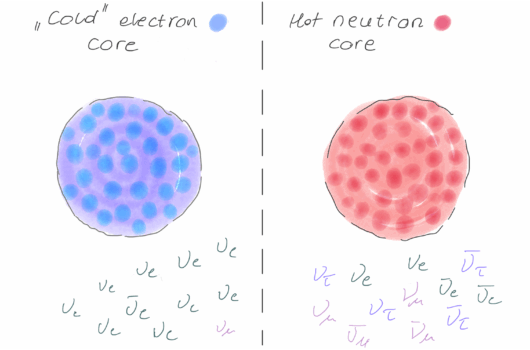Pi in the Sky: Neutron Stars with Exceptionally Light QCD Axions
Pi in the Sky: Neutron Stars with Exceptionally Light QCD Axions
View
Abstract
We present a comprehensive study of axion condensed neutron stars that arise in models of an exceptionally light axion that couples to quantum chromodynamics (QCD). These axions solve the strong-charge-parity (![]() ) problem, but have a mass-squared lighter than that due to QCD by a factor of
) problem, but have a mass-squared lighter than that due to QCD by a factor of ![]() . Inside dense matter, the axion potential is altered, and much of the matter in neutron stars resides in the axion condensed phase where the strong-
. Inside dense matter, the axion potential is altered, and much of the matter in neutron stars resides in the axion condensed phase where the strong-![]() parameter
parameter ![]() and
and ![]() remains a good symmetry. In these regions, masses and interactions of nucleons are modified, in turn changing the equation of state (EOS), structure, and phenomenology of the neutron stars. We take the first steps toward the study of the EOS of neutron star matter at
remains a good symmetry. In these regions, masses and interactions of nucleons are modified, in turn changing the equation of state (EOS), structure, and phenomenology of the neutron stars. We take the first steps toward the study of the EOS of neutron star matter at ![]() within chiral effective field theory and use relativistic mean field theory to deduce the resulting changes to nuclear matter and the neutron star low-density EOS. We derive constraints on the exceptionally light axion parameter space based on observations of the thermal relaxation of accreting neutron stars, isolated neutron star cooling, and pulsar glitches, excluding the region up to
within chiral effective field theory and use relativistic mean field theory to deduce the resulting changes to nuclear matter and the neutron star low-density EOS. We derive constraints on the exceptionally light axion parameter space based on observations of the thermal relaxation of accreting neutron stars, isolated neutron star cooling, and pulsar glitches, excluding the region up to ![]() for
for ![]() . We comment on potential changes to the neutron star mass-radius relationship, and discuss the possibility of novel, nuclear-density compact objects with
. We comment on potential changes to the neutron star mass-radius relationship, and discuss the possibility of novel, nuclear-density compact objects with ![]() that are stabilized not by gravity but by the axion potential.
that are stabilized not by gravity but by the axion potential.






